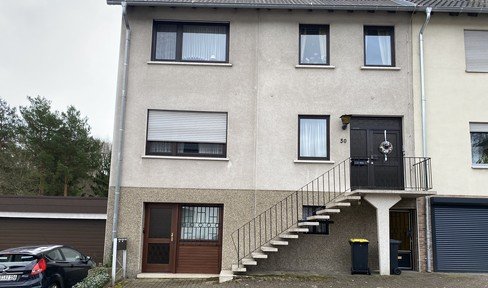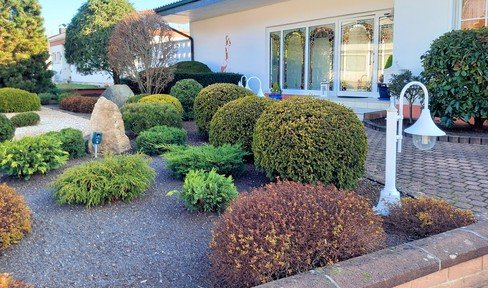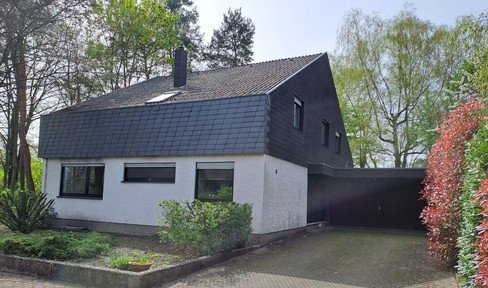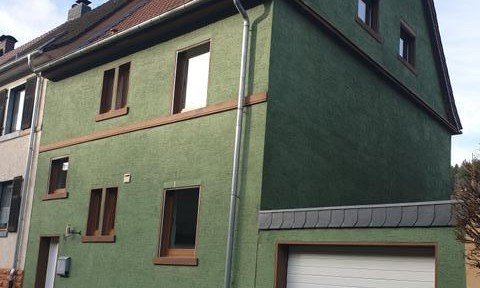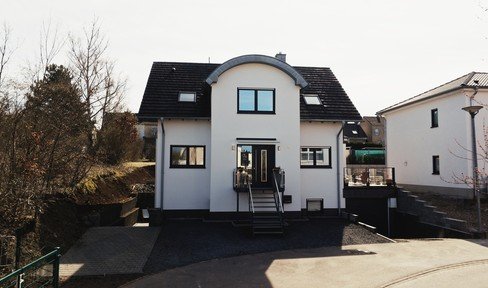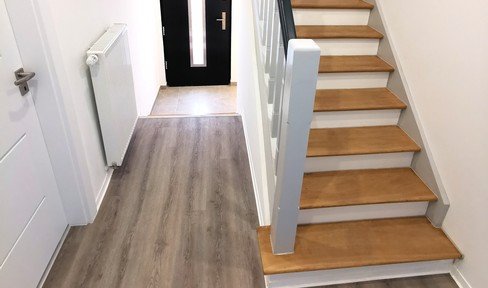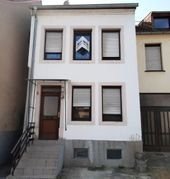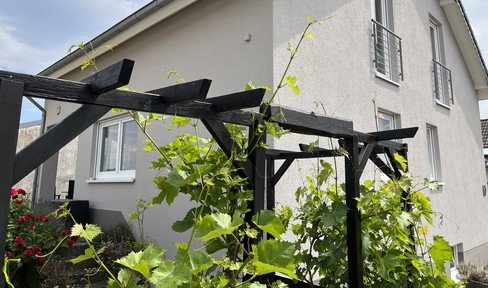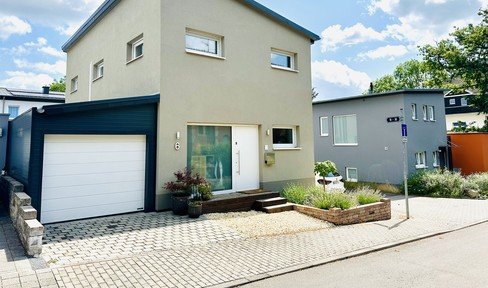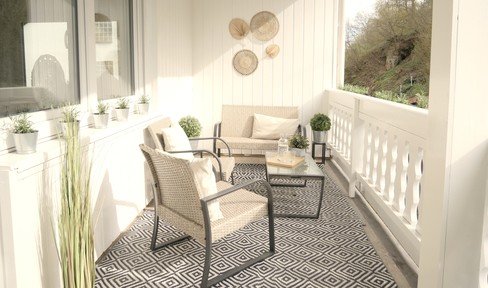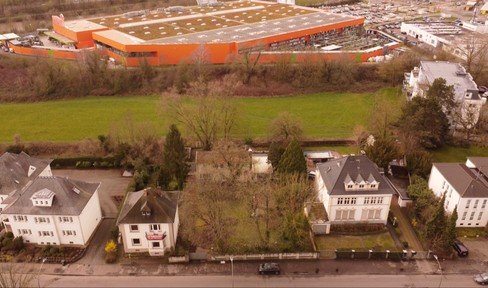- Properties
- Houses for sale
- Saarland

This page was printed from:
https://www.ohne-makler.net/en/properties/house-buy/saarland/
Comission-free Houses for sale in Saarland
Here you will find 12 offers for commission-free Houses in Saarland
The coal left, the houses stayed: The astonishing renaissance of Saarland
With a home ownership rate of almost 60 percent (58.1 %; 2013) and an average house and apartment size of more than 100 m² (103 m²; 2011), Germany's smallest territorial state occupies a top position nationwide, meaning that owning one's own spacious house is almost a matter of course in and around Saarbrücken, Saarlouis, St. Wendel, Neunkirchen and Homburg, as well as in the smaller towns and communities. Home construction in the Saarland was already intensively promoted at the time of Prussian rule at the beginning of coal mining and industrialization in the 19th century in order to attract and retain workers. Even after the end of mining in the 1980s, owning one's own house, which is usually used by the owner, has remained a traditional form of old-age security and a generally valued status symbol in the Saarland. But it is not only home ownership that has made Saarland one of the top players just outside the French border. In other areas, too, Saarland has reinvented itself remarkably over the last two decades and is now once again in an excellent economic position. The consistent settlement of innovative industrial and service sectors (automotive, wind power, information technology) has not only led to an increase in employment subject to social insurance contributions in almost all cities in the Saarland, but also to a pronounced surplus of commuters from neighboring countries. Last but not least, the region's very good transportation infrastructure makes commuting even easier, and those who want to relocate to the Saarland can hope for relatively inexpensive house prices in many places and, last but not least, lush forests that still cover more than a third of the state.
Saarbrücken is the "Little Paris" of the Saarland, but with more favorable prices
Although prices for houses of all sizes and years of construction have also risen sharply in recent years in Saarland and especially in the larger cities there, they are nevertheless, with the exception of a few cities and regions, usually still below those in the rest of Germany on average. Saarbrücken is and remains the capital not only of the state but also of its house prices. In top inner-city locations such as Triller, Bellevue (Ring am Gottwill), around the clinic on the Winterberg between St. Arnual and Alt-Saarbrücken, Am Staden on the right bank of the Saar, Am Rothebühl, in central St. Johann, Am Homburg and southwest of the Schwarzenbergbad around the "Villa Europa", single-family homes in old buildings currently cost between 400,000 euros and 1.5 million euros, and between 450,000 and 2 million euros for new buildings. But even in the rather expensive Saarbrücken East, there are still good and affordable residential locations with prices between 280,000 and 450,000 euros for the old building and about 400,000 to 750,000 euros for new buildings. For example, in Eschberg, in the Nauwieser Viertel, on Uhlandstrasse, around the Saarbrücken Zoo, and in districts 3 (Dudweiler) in Scheidt and 4 (Halberg) in Schafbrücke, Bischmisheim and Brebach-Fechingen. The left bank of the Saar along Hindenburgstrasse and Franz-Josef-Röder-Strasse is also still quite favorable for a central waterfront location with similar prices, as are the Rodenhof neighborhood north of the main train station, the areas north of the Franco-German Garden and east of Metzer Strasse.TheRußhütte residential area north of Malstatt and the Kreisstrasse commercial area in Klarenthal are also considered good residential locations.
Expensive border to the Grand Duchy, the south is more expensive than the north
In the remaining cities of the Saarland, a somewhat more differentiated picture emerges for the respective house prices. Among the more expensive patches by regional standards are Saarlouis and St. Ingbert, with prices ranging from around 1,500 to 1,700 euros/m². The cities and communities of Merzig, Mettlach, Perl, Borg and Orscholz near the border in the northern district of Merzig-Wadern, which are in high demand from Luxembourgers, play a special role with likewise higher prices, as the house prices there, ranging from around 1,200 to 1,400 euros/m², are mostly well below those in the Grand Duchy. Due to their proximity to Saarlouis and Saarbrücken, Dillingen, Schwalbach and Püttlingen also have a comparable price structure, as does the small town of Sulzbach/Saar. However, houses are still available at lower prices in and near Völklingen and Neunkirchen. In these two former industrial and mining towns, the price range for houses is still between quite reasonable 900 and 1,200 euros/m². Somewhat more expensive, on the other hand, is Homburg in the Saarpfalz district in the west, where houses cost almost 1,900 euros/m², while the nearby and smaller towns of Bexbach and Blieskastel are less expensive at around 1,000 to 1,200 euros/m². Currently, however, almost the entire north of Saarland is still extremely favorable. In the city of St. Wendel and the other towns and villages in the district of the same name (Freisen, Marpingen, Namborn, Nohfelden, Nonnweiler, Oberthal, Tholey), house prices have even fallen slightly in recent years to a current range of between approx. 600 and 1,100 euros/m².
Important information on buying a house in Saarland:
- From coal quarter to future laboratory: Saarland attracts companies again
- The home ownership rate has traditionally long been the highest in Germany
- The very well-developed transportation network makes the region quickly accessible
- The state capital Saarbrücken and Saarlouis are the most expensive regions
- Communities close to the border with the Grand Duchy of Luxembourg are in high demand
- The former mining towns of Völklingen and Neunkirchen are less expensive
- The northeastern district of St. Wendel also still offers good deals on houses
Popular Cities
Diese Seite wurde ausgedruckt von:
https://www.ohne-makler.net/en/properties/house-buy/saarland/
